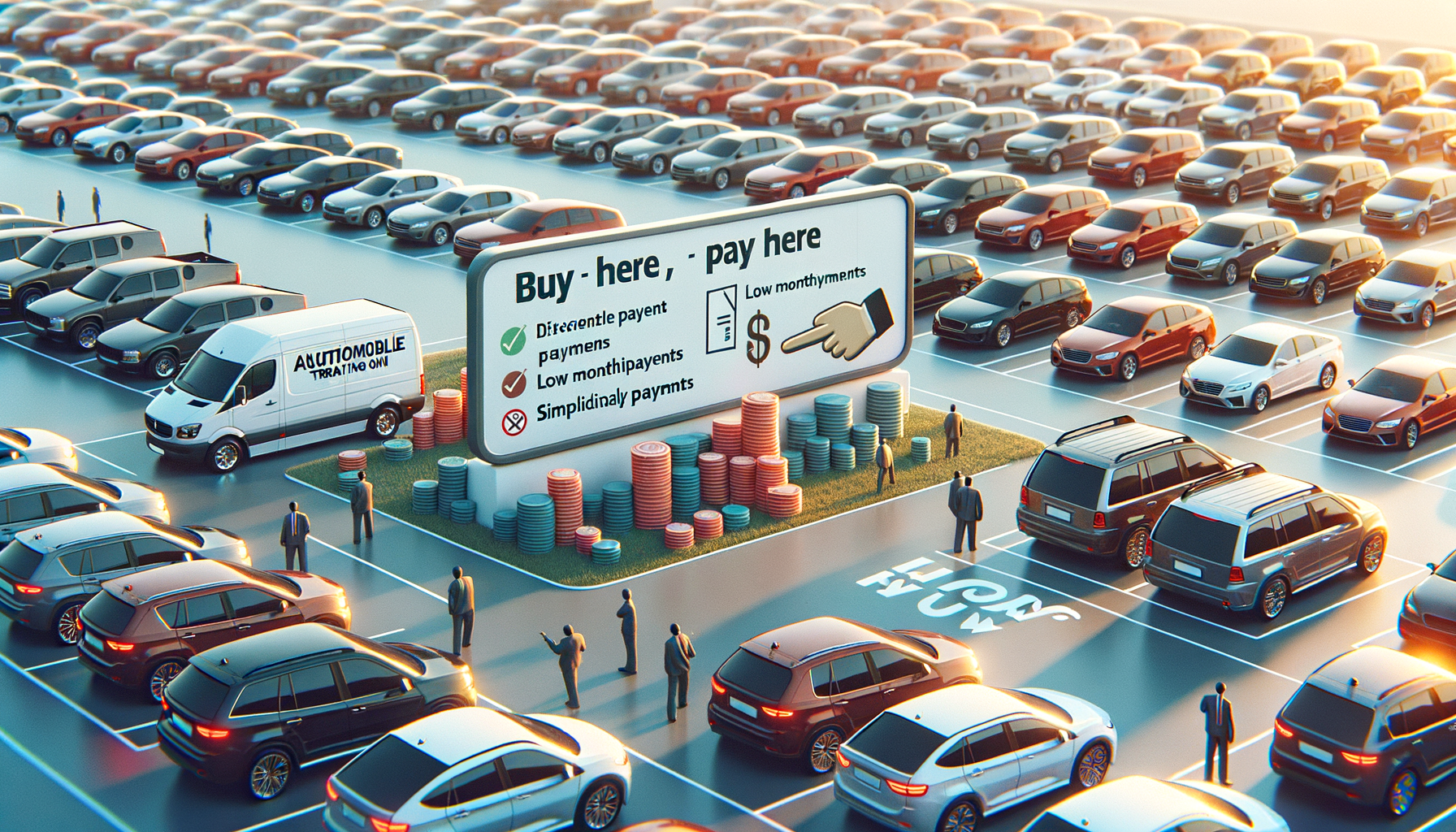Discover affordable and popular Used Cars in 2025
Buying a pre-owned car is a cost-effective way to own a reliable vehicle without the hefty price tag of a new one. With lower depreciation, reduced insurance costs, and certified options, used cars offer great value. Always check vehicle history and condition to ensure a smart purchase. Explore popular cars in 2025 and discover options for sale nearby.

Understanding Buy Here Pay Here Cars
Buy Here Pay Here (BHPH) car dealerships provide an alternative financing option for individuals who may struggle to secure traditional auto loans due to poor credit history. These dealerships offer in-house financing, meaning the dealership itself acts as the lender. This can be particularly beneficial for those with bad credit or no credit history at all, as it provides a path to vehicle ownership that might otherwise be unavailable.
One of the key features of BHPH dealerships is their flexibility in terms of credit requirements. Unlike traditional lenders that rely heavily on credit scores, BHPH dealers focus more on the buyer’s current financial situation and ability to make payments. This can be a lifesaver for those recovering from financial setbacks or establishing their credit for the first time.
However, it’s important to approach BHPH dealerships with a clear understanding of the terms. Interest rates can be significantly higher than those offered by conventional lenders, reflecting the increased risk the dealership takes on. Additionally, payments are often required on a weekly or bi-weekly basis, and the selection of vehicles may be limited compared to traditional car lots.
When considering a BHPH purchase, it’s crucial to thoroughly review the contract and understand the total cost of the vehicle, including interest. Buyers should also ensure that the vehicle is reliable and in good condition, as warranties may be limited or nonexistent.
The Role of Buy Here Pay Here Car Lots
Buy Here Pay Here car lots serve as a one-stop shop for purchasing and financing a vehicle. These lots are typically smaller, independent dealerships that focus on used cars. They cater to a specific market segment, offering vehicles to individuals who might not qualify for traditional financing.
The process at a BHPH lot is straightforward. After selecting a vehicle, the dealership assesses the buyer’s financial situation to determine a suitable payment plan. This often involves looking at the buyer’s income, employment stability, and current financial obligations. The dealership then sets the terms of the loan, including the interest rate and payment schedule.
While BHPH lots provide an accessible option for car buyers with credit challenges, it’s important to consider the potential downsides. Vehicles offered at these lots are often older models with higher mileage, which can lead to increased maintenance costs. Additionally, the interest rates on BHPH loans are typically higher than those from banks or credit unions, which can significantly increase the overall cost of the vehicle.
Despite these challenges, BHPH car lots can be a viable solution for those in need of a vehicle but lacking the credit to secure traditional financing. As with any major purchase, it’s essential to conduct thorough research and understand the terms before committing to a loan.
Buy Here Pay Here with Low Monthly Payments
One of the appealing aspects of Buy Here Pay Here dealerships is the ability to negotiate low monthly payments. This can make car ownership more manageable for individuals on a tight budget. However, it’s important to understand how these payments are structured and what they mean in terms of the overall cost of the vehicle.
At a BHPH dealership, the payment plan is often tailored to fit the buyer’s financial situation. This means that the dealership will work with the buyer to set a payment amount that aligns with their monthly income and expenses. While this flexibility is beneficial, buyers should be mindful of the loan’s interest rate and term length, as these factors can greatly influence the total amount paid over time.
To ensure that monthly payments remain low, buyers may need to make a larger down payment or opt for a longer loan term. While extending the loan term can reduce monthly payments, it also increases the amount of interest paid over the life of the loan. Therefore, it’s crucial to strike a balance between affordable payments and the overall cost of the vehicle.
Buyers should also consider the potential for additional costs, such as maintenance and repairs, which are common with older vehicles. It’s advisable to have a trusted mechanic inspect the vehicle before purchase to avoid unexpected expenses. By understanding the full financial commitment, buyers can make informed decisions and enjoy the benefits of vehicle ownership without straining their budget.